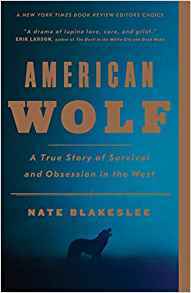More on this book
Community
Kindle Notes & Highlights
Read between
January 3 - February 13, 2019
Territorial conflict was the most common cause of death for the park’s wolves, most of whom didn’t live beyond four or five years. Life for wolves was an adventure, but it was usually not a long one.
Wolves were the driving force behind the evolution of a wide variety of prey species in North America after the last ice age, literally molding the natural world around them. The massive size of the moose, the nimbleness of the white-tailed deer, the uncanny balance of the bighorn sheep—the architect of these and countless other marvels was the wolf.
Over years of watching wolves, Rick had become convinced that empathy was the single most important trait that an alpha could have,
Lamar Valley boasted the highest prey density of anyplace on earth outside the African Serengeti.
stripped of their natural defenses against predators after centuries of domestication, sheep were known for making no attempt to escape when wolves came calling, and the result could be widespread carnage.
but the wolf’s threat to the shepherd’s livelihood poisoned relations between men and wolves, and the wolf’s reputation never recovered. In Western culture, the wolf became an embodiment of wickedness, from the Middle Ages, when the werewolf myth first appeared, to Grimm’s fairy tales in the early nineteenth century. Early Christians—“the flock,” as believers were called—saw themselves represented in the sheep; their shepherd was God. The wolf that preyed upon the flock was the devil himself.
There was hate, Lopez decided, but there was something else, too—something more akin to envy: “Here is an animal capable of killing a man, an animal of legendary endurance and spirit, an animal that embodies marvelous integration with its environment. This is exactly what the frustrated modern hunter would like: the noble qualities imagined; a sense of fitting into the world. The hunter wants to be the wolf.”
Though it never became law, the Wyoming state legislature approved a bill shortly before reintroduction that offered a thousand-dollar bounty to anyone who shot a wolf dispersing from Yellowstone, and directed the state to pay attorney’s fees for anyone charged with illegally killing a protected wolf.
The real struggle was over public land—what it should be used for and who should have the right to decide.
Greater Yellowstone, the largest intact temperate ecosystem left in the world, was returning to its former glory.
The science was on Smith’s side, but it didn’t seem to matter to ranchers and hunters, or to state legislators. The debate wasn’t about science anymore, if indeed it ever had been.


